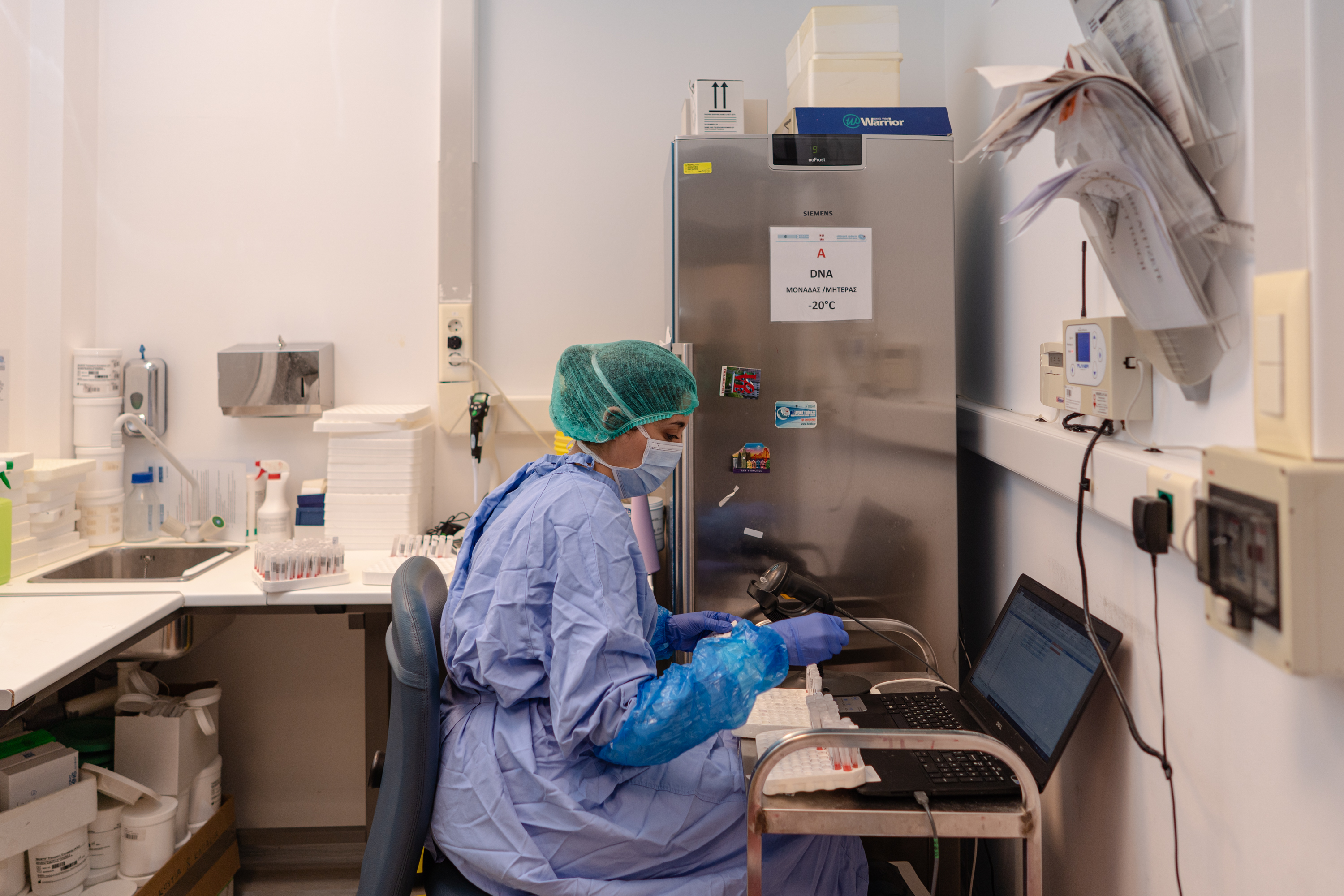Omicron puts Greek Genome Center on high alert

Its predominance was almost universal. Jumping from host to host faster than previous variants, Delta managed to dominate over other strains in our country by the end of the summer. It seemed unrivaled.
However, scientists mapping the spread of variants of SARS-CoV-2 at the Greek Genome Center (GGC), established by the Biomedical Research Foundation of the Academy of Athens (BRFAA), are back on high alert following the advent of the new Omicron variant – first reported in South Africa in late November and within just a few short weeks in most other parts of the world. The virus is not done mutating, and this has led to an intensification of the center’s already tense program.
Though believed to cause less severe illness that previous strains, according to some of the more recent scientific findings, the terrific speed at which Omicron is transmitted quickly prompted new restrictive measures in many parts of the world – including Greece – and an acceleration of efforts to increase inoculation and get booster shots into the arms of those who have already been vaccinated against the virus.
“As long as the virus finds room and grows without resistance, without the first line of defense – the antibodies provided by the vaccine – it will multiply uncontrollably. The faster it multiplies and the bigger the pressure it comes under, the greater the chance that it will copy itself wrong,” Dr Katerina Zoi, a molecular geneticist and the deputy supervising scientist at the GGC, told Kathimerini.
“These errors can give the virus a selective advantage that may be related to transmissibility or immunity evasion,” she added.
Within the initial few weeks of Omicron first being reported, sequencing and analysis of the virus confirmed 17 cases of that particular strain in Greece from 1,173 randomly selected samples up to December 13. The first five cases had mild symptoms but a high viral load. Two of them concerned people who had recently traveled from South Africa to Greece, while two others had arrived from France.
According to more recent data from the National Organization for Public Health (EODY), of the 6,604 samples checked on December 20-30, 2,840 (or 43%) were identified as Omicron. On December 30 alone, 62% of the samples checked were Omicron.
“Right now, it is essential to check as many samples they send us as possible, as soon as possible,” says Zoi. “There is also a directive from the European Agency for Disease Prevention and Control to increase the dynamics, the number of sequential tests.”

Sequencing libraries
Samples are sent to the GGC laboratory by civil protection authorities. They are collected from the country’s entry points, but are also sent from laboratories working with the National Genomic Surveillance Network under the coordination of EODY. With each new batch of sampled delivered, the scientists construct a new generation sequencing library, which means the stage where the genetic material of the virus is amplified. The samples are then inserted into special machines, the DNA sequencers.
The protocol, from the receipt of the sample until the completion of the sequencing, takes about four days to complete and the GGC has the capabilities to analyze a maximum of around 1,500 samples per week.
Dr Giannis Vatsellas, the GGC’s wet-lab scientific manager, tells Kathimerini that since the appearance of the Omicron variant, the lab has more than doubled the number of samples it checks. At the same time, it also examines emergency samples.
After completing the DNA sequencing, the sample is analyzed by the GGC’s supercomputer, which performs all sorts of different bioinformatic analyses to identify exactly which strain of the virus was found in a sample, as well as what mutations it carries.
Neither Vatselas nor Zoi expect the work being done to map the virus and its mutations to stop the transmission of the Omicron variant. What they hope to accomplish is to help slow its progress, so that Greek health authorities gain valuable time in implementing other defense strategies, such as speeding up the administration of a booster shot to vaccinated people.
Regarding the severity of the new variant, both scientists said it is still premature to draw any definitive conclusions, though recent studies and the World Health Organization point to it having a reduced risk of hospitalization.
“Omicron has 32 mutations in the spike protein that the virus uses to enter our body. We have found some of these mutations in other strains, such as Alpha,” says Zoi. “We do not have information about some of the mutations. Using prediction models, we can have some primary indication of whether these mutations are associated with increased transmissibility or less immunity. Nevertheless, we still do not know how the combination of all these mutations in one strain will shape the final situation.”
The way in which both Delta and Omicron first appeared in countries with low vaccination coverage and then spread across the world, mainly affecting the unvaccinated, shows that developments in the pandemic in another parts of the world can have a profound impact on our lives as well.
“A pandemic is not a personal issue. We are a big village, a global community,” says Zoi. “The virus will continue to circulate as long as people communicate, because you cannot stop life. But it is not enough to just protect our home. If the forest is on fire, it is not enough to have only one trench protecting our house.”





